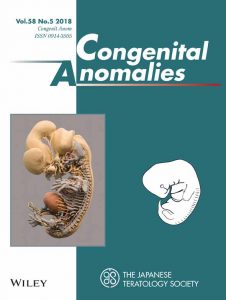Blechschmidt collectionスキャンプロジェクトについての論文がCongenital anomaliesに掲載されました。先天異常標本解析センター、ドイツ・ゲッティンゲン大学解剖学教室との共同プロジェクトです。
(ゲッティンゲン大学ヒト胚子コレクションの組織学的解析およびデジタルアトラス作成;基盤(B)(海外 )2015-2017)
- Blechschmidt コレクションの組織標本を、市販のフラットベッド スキャナーを使用して4800 dpiの解像度画像にデジタル化
- CRL64mm, CRL17.5mm (CS20) の2 つの標本について、最新の技術を使用して、立体再構成
⑦ Miyazaki R, Makishima H, Männer J, Sydow HG, Uwabe C, Takakuwa T, Viebahn C, Yamada S. The Blechschmidt Collection: revisiting specimens from a historical collection of serially sectioned human embryos and fetuses using modern imaging techniques, Congenit Anom, 2018, 58, 152-157, doi: 10.1111/cga.12261
ABSTRACT
Along with the Carnegie Collection in the United States and the Kyoto Collection in Japan, the Blechschmidt Collection (Georg-August-University of Göttingen, Germany) is a major historical human embryo and fetus collection. These collections are of enormous value to human embryology; however, due to the nature of the historical histological specimens, some stains are fading in color, and some glass slides are deteriorating over time. To protect these specimens against such degradation and ensure their future usefulness, we tried to apply modern image scanning and computational reconstruction. Samples of histological specimens of the Blechschmidt Collection were digitized into images using commercial flatbed scanners with a resolution of 4800 pixels per inch. Two specimens were reconstructed into three-dimensional (3D) images by using modern techniques to vertically stack two-dimensional images of the slices into 3D blocks. The larger specimen of crown-rump length (CRL) 64.0 mm, a series of very large histological sections in human embryology, was reconstructed clearly, with its central nervous system segmented before stacking. The smaller specimen of CRL 17.5 mm was also reconstructed into 3D images. The outer surface of the embryo was intact, and its development was classified according to the widely used Carnegie stages (CSs). The CS of the specimen was identified as the later half of CS 20. The invaluable Blechschmidt Collection can be revisited for further research with modern techniques such as digital image scanning and computational 3D reconstruction.








